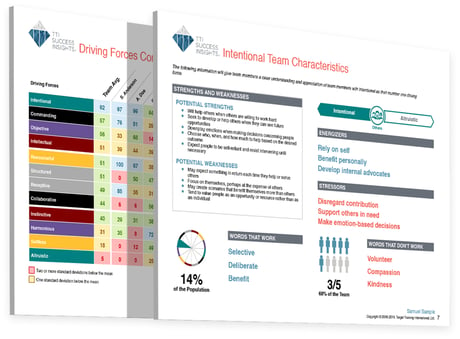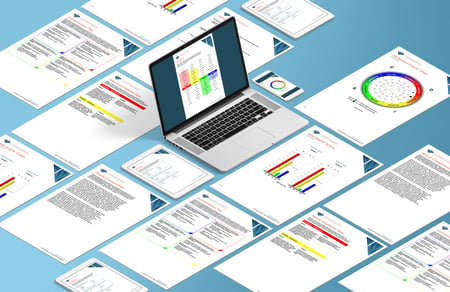
Employee engagement might not be a top of mind issue for you right now, but it should be. In an unstable economy and global market, you need to make sure that every member of your team is working at their peak ability. Forbes reports that employee disengagement translates to a profit loss of 34% of the disengaged employee's annual salary. Can you afford that kind of a loss?
Employee engagement isn’t just important from a profit point of view. Many people are feeling lost and discouraged right now with all the uncertainty, and the way your company treats people will mark your reputation for years to come. What can you do to support your team the way they need to be supported?
Here are some of the ways you can get started improving employee engagement.
Make Work Rewarding
Kforce reports that “half of employees would sacrifice their salary, as much as 29% of it, to work a job they enjoy.” While that doesn’t mean you can slash salaries, it does reveal just how powerful self motivation is.  Do you know what your employees need to thrive? Do you understand what drives them? Every individual has unique motivations; if you treat everyone in the same way, you’re not tapping in to their fullest potential. Leaders need to work to make each role as effective as possible by offering them rewards and enrichment opportunities based on their personal styles.
Do you know what your employees need to thrive? Do you understand what drives them? Every individual has unique motivations; if you treat everyone in the same way, you’re not tapping in to their fullest potential. Leaders need to work to make each role as effective as possible by offering them rewards and enrichment opportunities based on their personal styles.
A common mistake that leaders make is to try to motivate their entire team based on their personal motivations, not the motivations of individuals. You can avoid this by learning about the unique motivators for each of your team members.
Live Your Values
 People want to work somewhere where their values are reflected. An old school approach says that work is work and personal beliefs don’t affect the daily grind, but that mindset is outdated and incorrect.
People want to work somewhere where their values are reflected. An old school approach says that work is work and personal beliefs don’t affect the daily grind, but that mindset is outdated and incorrect.
More employees quit their job for the opportunity to do more meaningful work than those who quit for a larger paycheck, reports Pay Scale. How can you ensure that your values and their values are not only aligned, but reflected in daily work?
First of all, you need to decide what your values actually are. Then, share them with your team. If a ‘People-First’ mentality is an official company value, it needs to be lived out beyond being displayed on a poster or listed in the company handbook. What actionable things can you do every day to live out your values?
Improve Communication
Is your team getting what they need? How would you find out if they aren’t? If developing communication isn’t a priority for your team, you’re never going to know if problems are occurring in the first place.
Your first step is to figure out everyone’s communication styles. Again, leadership might only be communicating in their preferred style, which could add unnecessary pressure onto their team.  For example, using the lens of DISC, if a leader has a High Dominance score, they prefer brief, rapid communication that can be considered curt by someone with a high Influence score, too rushed by someone with a high Steadiness score, or unthorough by someone with a high Compliance score. This then puts pressure on the team to first interpret the meaning behind the conversation and the best action to take to please their leaders, rather than finding the best way to simply complete the task.
For example, using the lens of DISC, if a leader has a High Dominance score, they prefer brief, rapid communication that can be considered curt by someone with a high Influence score, too rushed by someone with a high Steadiness score, or unthorough by someone with a high Compliance score. This then puts pressure on the team to first interpret the meaning behind the conversation and the best action to take to please their leaders, rather than finding the best way to simply complete the task.
Make sure coaching is performed in-person, performance issues are addressed promptly and kindly, and that leadership is working to improve the lives of their employees, every day. If you’re curious about how each behavior style can adapt to stressful situations, read our blog post here.
Offer Development and Continuous Learning
If you really think about it, employees are investing a majority of their waking hours and energy into their jobs. Besides a paycheck, what are they getting back from you?  Did you know that sticking with the same employer for more than two years costs an employee 50% or higher in their lifetime wages? That statistic should be sobering to employers. No matter what the job market is looking like right now, your employees will eventually have options to move on. Financially, it makes sense for them to do so, unless you give them a reason to stay.
Did you know that sticking with the same employer for more than two years costs an employee 50% or higher in their lifetime wages? That statistic should be sobering to employers. No matter what the job market is looking like right now, your employees will eventually have options to move on. Financially, it makes sense for them to do so, unless you give them a reason to stay.
A great way to do this is to provide career development and continuous learning opportunities. Pay for them to take a course and learn a new skill, have your team attend development conferences, and offer specific coaching. Ask them what their goals are and help build a learning plan to achieve that.
This cross training eliminates stagnation in their position and develops your talent pipeline. If you can promote from within, why wouldn’t you? Developing leaders within your organization is a win/win for employee engagement and for your bottom line.
Employee Engagement is Your Key to Success
After reading this article, you might be feeling overwhelmed. The good news is that you have the right tools at your fingertips. TTI SI is proud to introduce the Talent Insights Engagement Report, your fast-track to reboarding in the new normal. This new report features updated statements, modern styling, and a whole new way to look at DISC with TTI SI’s premier horizontal continuum.
Want to learn more? Contact your Business Development Consultant for more info, or catch the replay of TTI SI President Rick Bowers’ webinar about the Engagement Report on my.ttisi.com. Be the first to know when this report is available for all organizations.
If you’re not a member of the network, join us at our free webinar to learn about how you can harness opportunities with TTI SI.
Employee engagement is the key to establishing your organization as a leader in the new world of work. Get started today with the right tools to create the foundation you and your team need.




